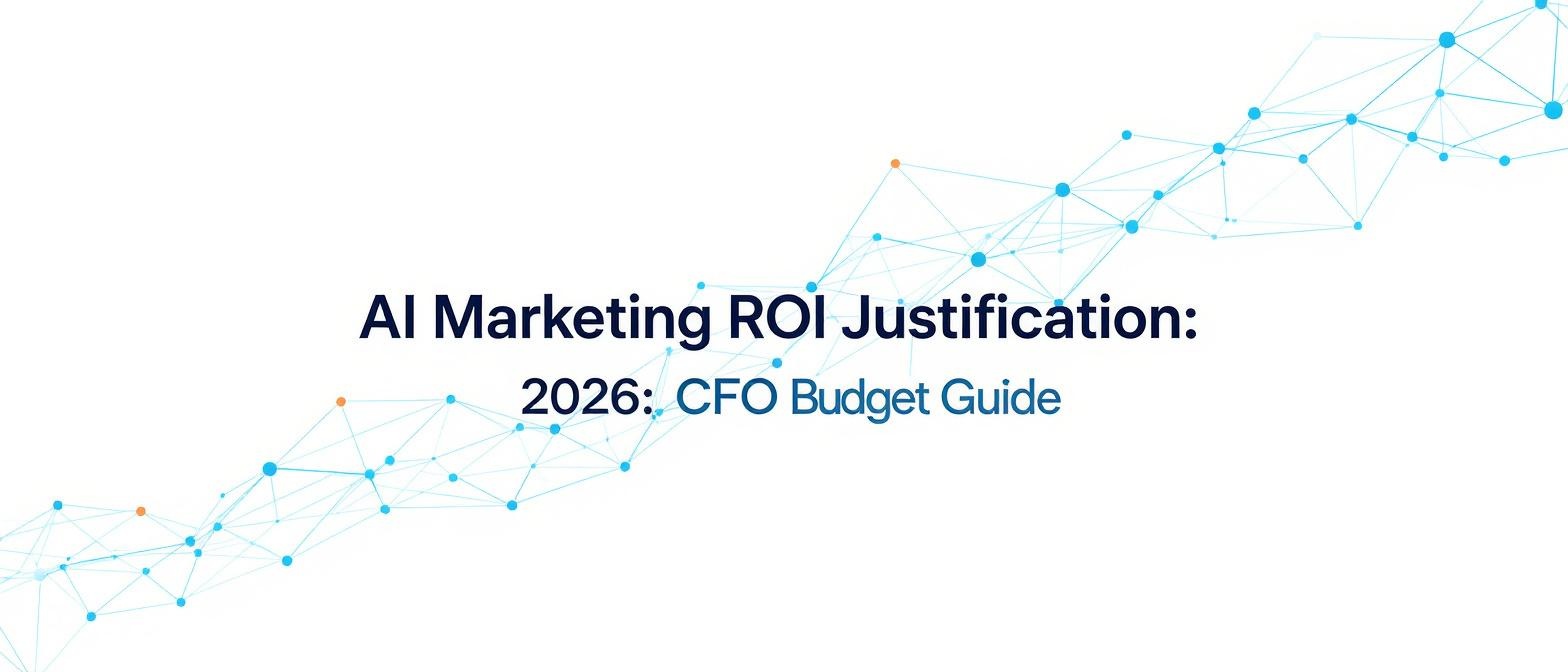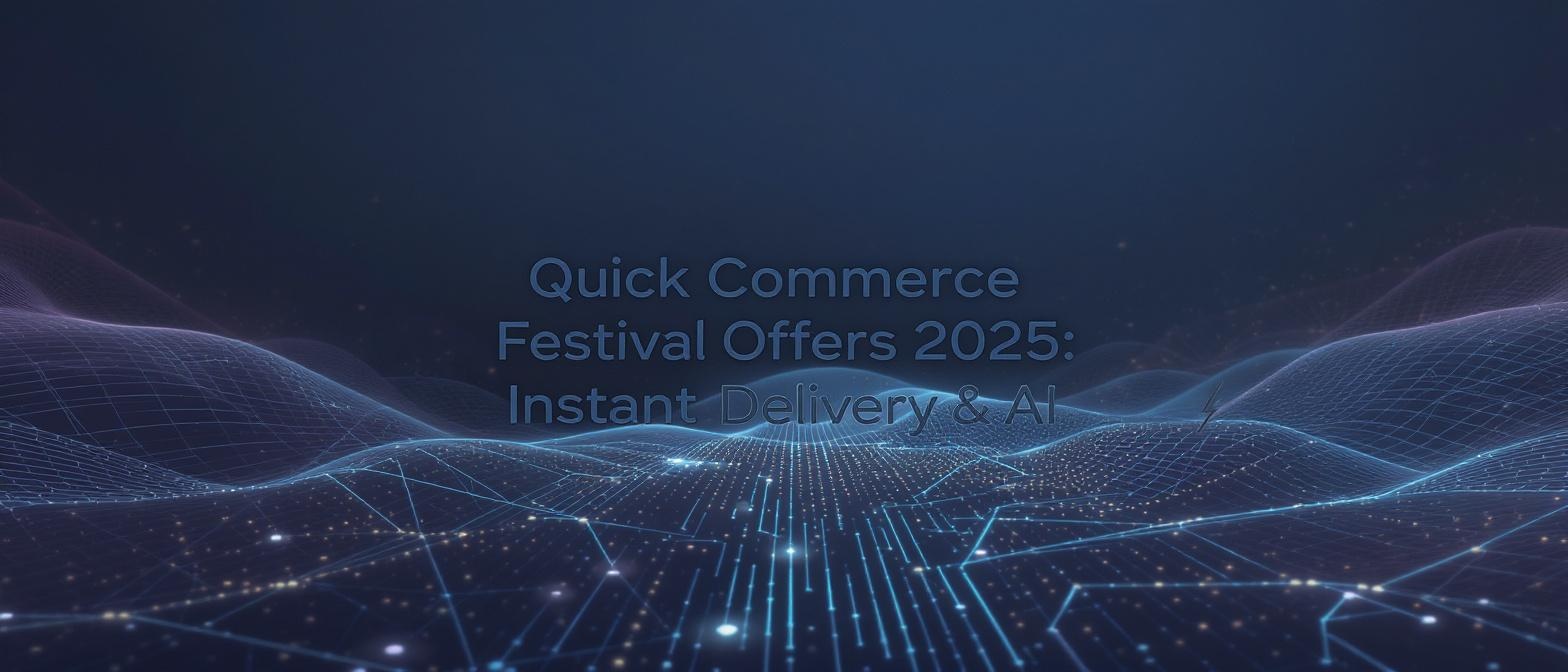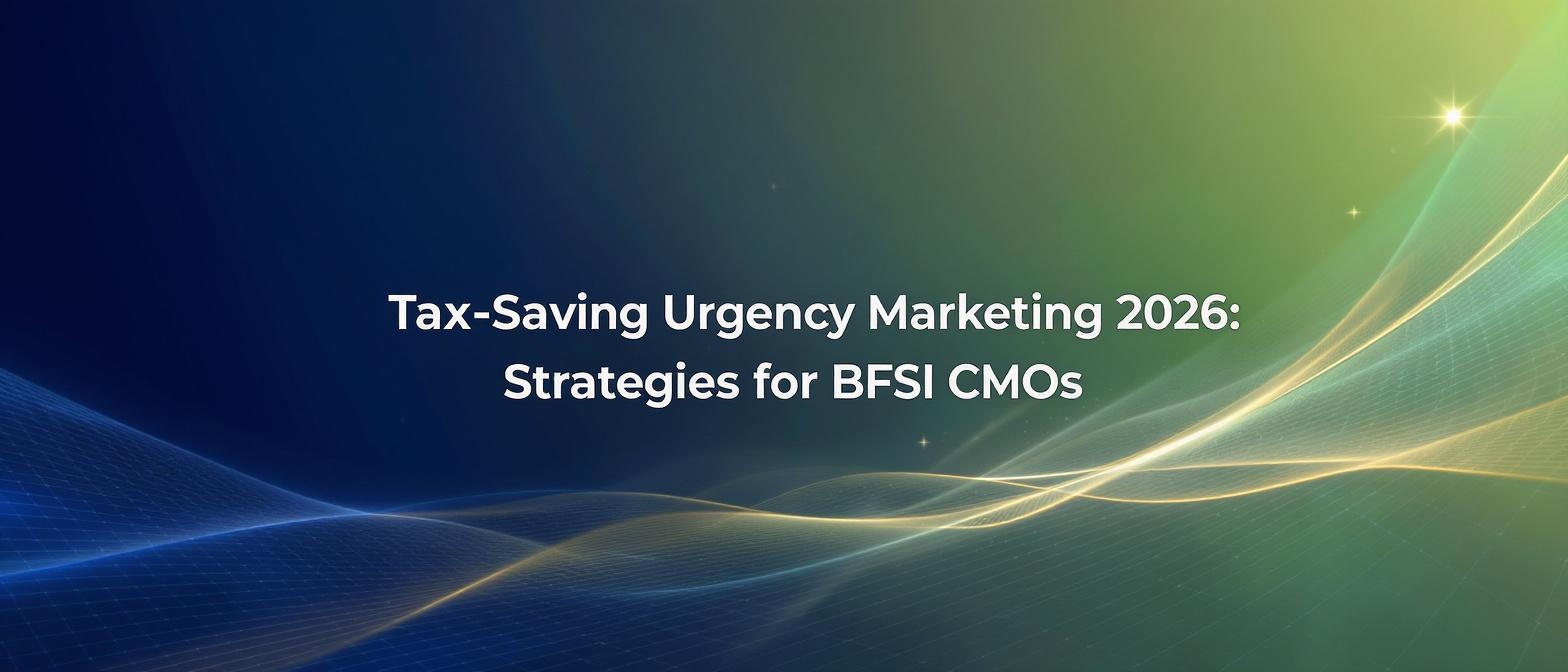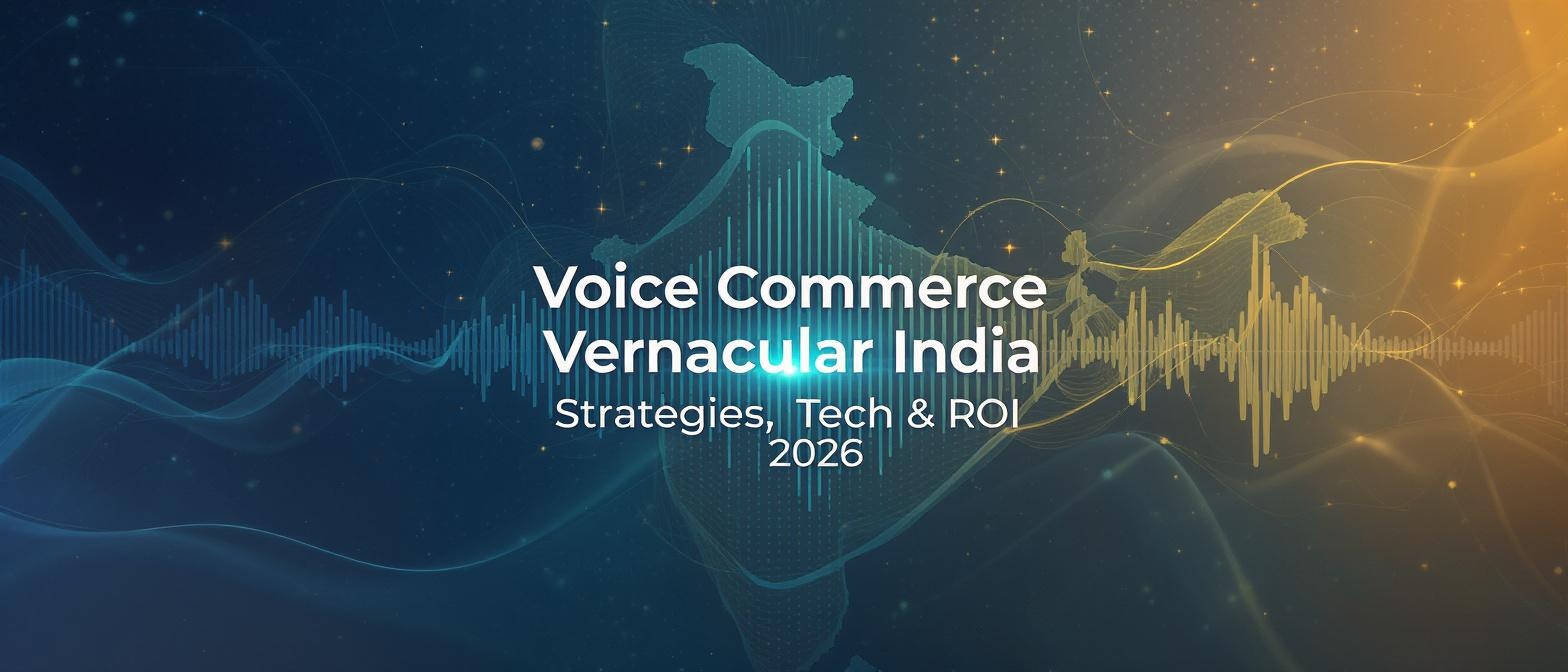AI Marketing ROI Justification 2026: A CFO’s Data-Driven Business Case for AI Video Marketing
Estimated reading time: ~13 minutes
Key Takeaways
- AI marketing investments will be a core financial priority for 2026.
- Rigorous cost-benefit analysis is required to gain CFO approval.
- Personalized video campaigns deliver measurable revenue and engagement increases.
- Effective AI ROI calculations include total costs, tangible returns, and net ROI formulas.
- Pilot programs and phased rollouts build a data-driven business case for large-scale adoption.
1. Introduction: The 2026 AI Imperative for Marketing Budgets
By 2026, artificial intelligence will no longer be an experimental line item in the marketing budget. It will represent a core, non-negotiable investment essential for competitive survival and growth. As we enter the Q4 budget planning cycle for the coming fiscal year, finance leaders must prepare for this shift. The conversation is no longer about if marketing should invest in AI, but how those investments will deliver measurable financial returns.
AI marketing ROI justification 2026 is the definitive process CFOs and budget committees will use to validate this spend. It involves a rigorous, data-driven framework for demonstrating the tangible value—from revenue uplift to operational efficiency—of AI-powered initiatives. For finance leaders tasked with ensuring fiscal prudence and forecast accuracy, understanding this framework is critical for effective CFO marketing budget approval and strategic Q4 budget planning AI marketing.
Source: https://www.truefan.ai/blogs/2026-marketing-technology-budget-planning
2. What Is AI Marketing ROI Justification?
AI marketing ROI justification 2026 is the formal methodology for proving that every dollar invested in artificial intelligence marketing yields a clear, quantifiable, and positive return. This goes beyond vanity metrics, focusing instead on tangible business outcomes like direct revenue uplift, significant cost savings, and measurable gains in operational efficiency.
The scope of this justification is comprehensive. It covers not just the initial licensing fees for AI platforms but also the associated costs of integration, employee training, and the ongoing production of AI-driven content, such as personalized videos. As enterprises move towards more sophisticated applications, this financial scrutiny becomes paramount. According to industry analysis, leading enterprises are projected to budget 10–15% of their total marketing technology spend on AI tools by 2026, making robust marketing technology investment ROI calculation a standard practice. These marketing automation ROI metrics provide the financial proof needed to secure and expand AI investments.
Source: https://www.truefan.ai/blogs/2026-marketing-technology-budget-planning, https://iterable.com/blog/15-stats-roi-ai-marketing/
3. The CFO’s Perspective on AI Investments
From a Chief Financial Officer's viewpoint, any significant capital expenditure, including AI technology, must pass a stringent cost-benefit analysis. For fiscal year 2026, CFOs demand more than just marketing buzzwords; they require a transparent and predictable financial model. Their decision-making is driven by concrete Key Performance Indicators (KPIs) that directly link marketing activities to the company's bottom line.
Key CFO-level KPIs for evaluating AI marketing spend include:
- Incremental Revenue: The additional sales generated directly by AI-powered campaigns compared to a control group.
- Customer Lifetime Value (LTV): How AI-driven personalization and retention efforts increase the total value of a customer over time.
- Cost Per Acquisition (CPA): A demonstrable reduction in the cost to acquire a new customer through AI-driven targeting and automation.
- Efficiency Gains: Quantified savings in terms of employee hours, agency fees, or production costs.
To facilitate CFO marketing budget approval, marketing leaders must present their AI marketing ROI justification 2026 using tools finance understands. This includes real-time analytics dashboards for performance tracking and sophisticated scenario planning models that forecast financial impact under various market conditions. This level of enterprise AI marketing cost-benefit analysis is no longer a "nice-to-have" but a prerequisite for investment.
Source: https://www.truefan.ai/blogs/2026-marketing-technology-budget-planning
4. The Case for Enterprise Video Personalization
Enterprise video personalization is the next frontier of customer engagement, moving far beyond simply inserting a name into an email. It refers to the API-driven, data-centric creation of video content where a celebrity, brand ambassador, or CEO addresses individual customers with specific, contextually relevant information—such as their name, location, or recent purchase history.
The technical workflow behind this is a testament to modern AI. Platforms like TrueFan AI enable a seamless process:
- Customer data is fed into the system via a secure JSON payload.
- This data populates a pre-approved celebrity video template via an API call.
- Advanced AI, including diffusion-based face reanimation and voice cloning, generates a new, unique video.
- The final, hyper-personalized video is rendered and delivered in under 30 seconds.
This capability transforms marketing from a one-to-many broadcast into millions of one-to-one conversations. The impact is immediate and measurable. Campaigns using this technology have seen 17% higher message read rates, driving engagement and improving click-through rates by 2-3x. This powerful combination of technology and personalization makes a compelling AI video marketing business case for any CMO planning their enterprise video personalization budget planning.
Source: TrueFan Enterprise Offerings Document
5. Marketing Technology Investment ROI Calculation
A credible AI marketing ROI justification 2026 rests on a clear and simple ROI formula. This calculation demystifies the investment for finance teams by breaking it down into three logical steps. It provides the financial clarity needed to build a winning AI video marketing business case.
Step 1: Define Total Costs
First, create a comprehensive list of all associated expenses. This isn't just the sticker price of the software.
- Licensing & Usage Fees: Annual API access, per-video rendering costs, or campaign-based packages.
- Integration & Setup: The cost of IT and developer resources required to connect the AI platform to your existing CRM, CDP, or marketing automation tools.
- Content & Operational Overhead: The cost of the initial celebrity shoot and any internal resources dedicated to campaign management and moderation.
Step 2: Quantify Total Returns
Next, attribute financial value to the campaign's outcomes. Solutions like TrueFan AI demonstrate ROI through detailed analytics dashboards that track these metrics.
- Incremental Revenue Uplift: A/B test personalized video campaigns against static banners or text messages to isolate the exact revenue increase.
- Operational Cost Savings: Calculate money saved by avoiding expensive traditional video production, including agency fees, multiple location shoots, and localization costs.
- Efficiency Gains: Quantify the value of time saved. For example, if automation saves a marketing manager 5 hours per week, the annual saving is (5 hours x 52 weeks x resource hourly cost).
Step 3: Calculate Net ROI
The final step is the net ROI formula, which presents the return in a language every CFO understands.
- ROI % = [(Total Returns – Total Costs) / Total Costs] × 100
- Example: If a total investment of ₹1,000,000 in an AI video campaign generates ₹2,000,000 in combined revenue uplift and cost savings, the ROI is 100%.
This straightforward marketing technology investment ROI calculation turns a complex technology proposal into a clear-cut business decision.
Source: https://www.truefan.ai/blogs/2026-marketing-technology-budget-planning
6. Building a Business Case for AI Video Marketing
To secure budget for a new technology, you must prove its value with real-world evidence. An effective AI video marketing business case is built on a "pilot, measure, scale" framework, using data from initial tests to justify broader investment.
1. Pilot a High-Impact Use Case:
Start small but smart. Identify a critical business challenge where personalization can make a significant impact. For example, target customer churn with a personalized retention video message delivered via WhatsApp or re-engage users who abandoned their shopping carts.
2. Measure Relentlessly:
Track the pilot's performance against a control group. Key metrics to measure include engagement rates (view-through, clicks), conversion uplift (purchases, sign-ups), and cost per lead. This initial data is the foundation of your financial projections.
3. Scale Across the Customer Journey:
Use the pilot's success to build a business case for scaling. Project the financial impact of expanding the initiative to your entire customer base across multiple channels, including email, SMS, in-app notifications, and even digital out-of-home advertising.
Real-World Case Studies for Your Budget Committee:
- Zomato's Mother's Day Campaign: Generated 354,000 unique, personalized videos in a single day, driving record order numbers and immense brand love. This demonstrates scalability and emotional connection.
- Goibibo's Personalized Travel Nudges: Achieved a 17% higher WhatsApp message read rate and significant conversion lifts by sending personalized video nudges from a celebrity about users' searched travel destinations. This proves direct impact on conversion funnels.
By translating these case study metrics into financial projections for your own business, you can create a powerful and data-backed proposal that resonates with finance leaders focused on enterprise AI marketing cost-benefit analysis.
Source: TrueFan Enterprise Offerings Document, https://cmotech.ca/story/genai-drives-marketing-roi-as-85-of-teams-expand-adoption
7. Gaining CFO Approval: Strategies & Best Practices
Securing CFO marketing budget approval for a significant AI investment requires a strategic approach that directly addresses the priorities of the finance department. It’s about speaking their language: data, risk mitigation, and predictable returns. A recent survey from the Content Marketing Institute confirms that AI investments are expected to top the list of B2B marketing budget priorities for 2026.
Here are proven strategies for your Q4 budget planning AI marketing presentation:
- Link Every Cost to a Financial Metric: Don't just present a total cost. Break it down. Show the cost per personalized video and directly compare it to the projected incremental revenue or LTV uplift per customer reached.
- Use Financial Planning Models: Instead of a single budget request, present options. Use zero-based budgeting to justify every dollar, or use scenario planning to compare the projected ROI of AI video against traditional media spend like television or digital display ads.
- Address Governance and Security Proactively: CFOs are gatekeepers of risk. Mitigate their concerns by highlighting the platform’s compliance certifications. For instance, mentioning that a partner like TrueFan is ISO 27001 and SOC2 certified demonstrates a commitment to data security and governance.
- Propose a Phased Rollout: De-risk the investment by proposing a multi-stage plan. This shows fiscal prudence and allows for data-driven checkpoints. A typical plan could be:
- Q4 2025: A limited-budget pilot project.
- H1 2026: Scale successful pilots to a larger segment.
- H2 2026: Full rollout across all relevant channels, funded by the proven returns of the earlier phases.
This data-first, risk-aware approach transforms your budget request from a marketing expense into a strategic, self-funding growth investment.
Source: https://contentmarketinginstitute.com/b2b-research/b2b-content-marketing-trends-research
8. Key Marketing Automation ROI Metrics
To justify investment, you must track the right marketing automation ROI metrics. These KPIs move beyond impressions and clicks to measure the real business impact of your technology stack. They are the core components of any effort to achieve marketing technology spend optimization.
Here are the essential metrics to build into your reporting dashboard, with illustrative examples:
- Incremental Revenue Per Campaign: This measures the direct sales lift from your automation efforts. (Example: An AI-driven personalized video campaign generated ₹50,00,000 in sales from a segment that typically yields ₹30,00,000, showing a ₹20,00,000 incremental lift)
- Cost Per Lead (CPL) Reduction: This demonstrates efficiency in your acquisition funnel. (Example: By using AI to better qualify and nurture leads, CPL was reduced by 25% quarter-over-quarter)
- Customer Engagement Rate: This tracks how deeply customers are interacting with your content. Go beyond open rates and measure view-through rates for video, click-through rates on personalized offers, and subsequent actions taken.
- Efficiency Gains (Hours Saved): This quantifies the operational benefit of automation. Industry data shows AI tools can save 1-5 strategic hours per marketing professional every week. By automating video creation and distribution, platforms like TrueFan dramatically accelerate campaign time-to-market.
Focusing on these metrics provides a clear, compelling narrative of financial return for any enterprise video personalization budget planning.
Source: https://www.truefan.ai/blogs/2026-marketing-technology-budget-planning
9. Enterprise AI Marketing Cost-Benefit Analysis
A powerful way to frame your AI marketing ROI justification 2026 is through a direct cost-benefit analysis comparing AI-driven methods to their traditional counterparts. For video, the difference is stark and financially compelling.
Traditional Video Production:
- Process: Involves multiple location shoots, hiring different actors for regional campaigns, separate voice-over recordings for each language, and lengthy post-production cycles.
- Timeline: Months.
- Cost: ₹multi-lakhs for a single high-quality campaign, with costs multiplying for each new language or variation.
AI-Driven Video Personalization:
- Process: Requires a single, one-time shoot with a celebrity. New versions, languages, and personalized elements are generated virtually using AI. With TrueFan AI's 175+ language support and Personalised Celebrity Videos, a global campaign can be created from a single asset.
- Timeline: Days.
- Cost: A fixed, predictable per-video cost (e.g., ₹15 per video at scale), allowing for massive campaigns without runaway expenses.
This analysis allows you to calculate a break-even point: the minimum conversion uplift required to offset the investment. Furthermore, the efficiency gains are enormous. TrueFan's enterprise partners have collectively saved an estimated 3,888 creative hours by eliminating the need for manual reshoots and edits. This dramatic marketing technology spend optimization makes the enterprise AI marketing cost-benefit analysis overwhelmingly positive.
Source: TrueFan Enterprise Offerings Document
10. Budget Allocation Best Practices for Personalized Video
Once the business case is approved, the question becomes how to allocate funds effectively. For personalized video marketing budget allocation, a strategic, tiered approach ensures that investment is directed toward proven activities while still leaving room for innovation.
As a best practice for 2026, experts recommend assigning 10–15% of the total martech budget specifically to AI-powered personalization technologies. This dedicated fund can be structured using a tiered allocation model:
1. Pilot & Experiment (5% of AI Budget):
Dedicate this portion to testing new AI video channels and use cases. This could include experimenting with interactive video, personalized out-of-home media, or new customer journey touchpoints.
2. Scale Proven Campaigns (5% of AI Budget):
Allocate this segment to scaling up the initiatives that have already demonstrated positive ROI in your pilot phase. This is the "growth engine" of your personalization strategy.
3. Optimization & Governance (5% of AI Budget):
Reserve this final portion for continuous optimization based on performance data, A/B testing creative variables, and ensuring ongoing compliance and data governance.
This framework supports marketing technology spend optimization by aligning spend with performance. Furthermore, adopting flexible pricing models, such as CPM (cost per thousand videos) for large-scale campaigns or a bulk annual license, allows your enterprise video personalization budget planning to adapt to specific campaign goals and financial models.
Source: https://www.truefan.ai/blogs/2026-marketing-technology-budget-planning
11. Optimizing Marketing Technology Spend
Effective marketing technology spend optimization is not just about cutting costs; it's about reallocating resources to the tools that deliver the highest return. As you prepare your Q4 budget planning AI marketing strategy, a rigorous audit and prioritization process is essential.
Here are four key steps to ensure your 2026 martech budget is working as hard as possible:
- Audit Your Existing Stack: Identify and eliminate redundancies. Are you paying for multiple tools that perform the same function? Are there under-utilized platforms that could be retired to free up budget for more impactful AI solutions?
- Prioritize High-ROI Capabilities: Focus investment on AI technologies that directly drive the three pillars of modern marketing: personalization at scale, intelligent automation, and predictive analytics. A recent HubSpot report indicates that nearly 20% of marketers plan to use AI agents to automate marketing in 2025.
- Implement Quarterly Reviews: Don't wait for the annual budget cycle. Use the live ROI dashboards provided by platforms like TrueFan Analytics to conduct quarterly business reviews. If a tool or campaign isn't meeting its financial targets, reallocate that spend immediately.
- Iterate Based on Performance Data: Use data to drive creative and strategic decisions. If your analytics show that videos mentioning a customer's city have a higher conversion rate, double down on that tactic. Constant, data-driven iteration is the key to maximizing marketing automation ROI metrics.
Source: https://www.hubspot.com/marketing-statistics
12. Conclusion & Next Steps
The era of justifying AI as an experiment is over. For marketing leaders and their finance counterparts, the AI marketing ROI justification 2026 is now a fundamental pillar of strategic planning and fiscal responsibility. Building a compelling business case, rooted in hard data and transparent ROI calculations, is the key to unlocking the transformative potential of artificial intelligence.
AI-powered personalized video, in particular, offers a clear and strategic advantage, driving unprecedented customer engagement, measurable revenue growth, and significant operational efficiencies. As you finalize your 2025-26 budgets, the time for decisive action is now. We encourage finance and marketing leaders to take the next step and explore a pilot of an enterprise AI video solution to see the data for themselves. This proactive approach will not just secure CFO marketing budget approval—it will position your organization to win in the years ahead.
Frequently Asked Questions
1. What is the typical timeline for launching a pilot AI video campaign?
A pilot campaign can be launched remarkably quickly. After the initial one-time celebrity shoot (which takes a few hours), the technical integration and template setup can typically be completed within 2-4 weeks, allowing you to go live with your first pilot campaign in under a month.
2. How do you measure the ROI of brand loyalty and customer experience improvements?
While harder to quantify than direct sales, brand metrics can be tied to financial ROI. This is done by measuring proxy metrics like Net Promoter Score (NPS), customer satisfaction (CSAT), and churn rate reduction. You can assign a financial value to a 1% reduction in churn or a 5-point increase in NPS based on historical customer value data.
3. What are the most common mistakes to avoid when presenting an AI marketing budget to a CFO?
The biggest mistakes are focusing on marketing jargon instead of financial metrics, presenting a single, all-or-nothing budget request without phased options, and failing to proactively address risks related to data security, compliance, and governance.
4. How can platforms like TrueFan AI ensure data security and compliance for enterprise clients?
Leading platforms prioritize security through a multi-layered approach. This includes achieving and maintaining rigorous international certifications like ISO 27001 (for information security management) and SOC 2 (for data privacy and processing integrity). They also operate on a consent-first model, ensuring all celebrity and user data usage is contractually defined and compliant with regulations.
5. Beyond marketing, what other business functions can leverage personalized AI video?
The applications are extensive. Human Resources can use it for personalized employee onboarding or service anniversary messages. Sales teams can use it for hyper-personalized outreach to high-value prospects. Customer service can use it to deliver personalized troubleshooting guides or thank-you messages after a support interaction.





